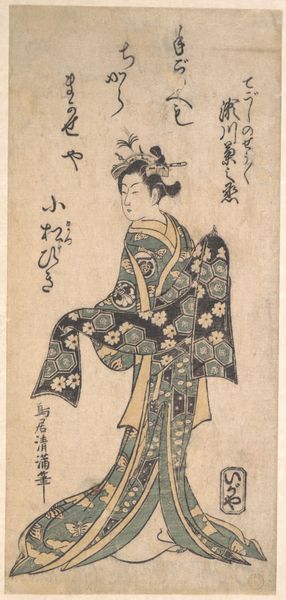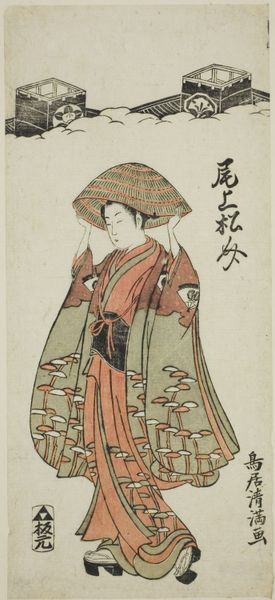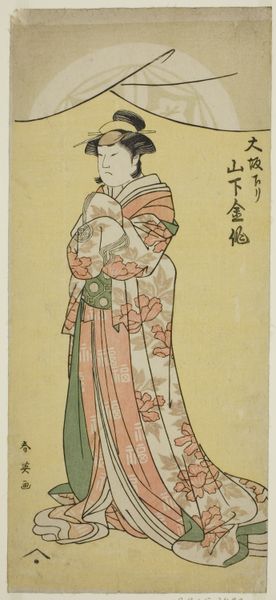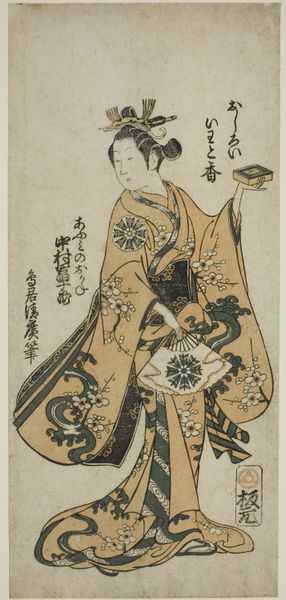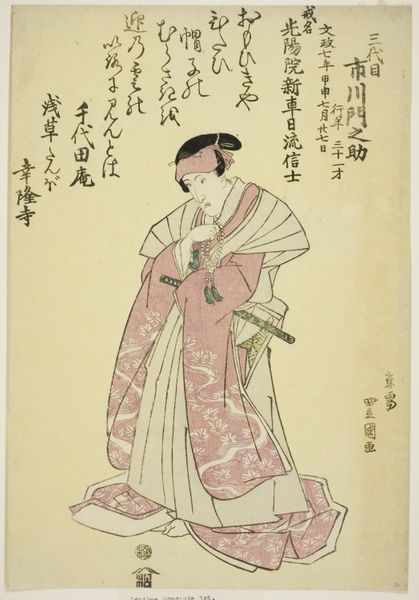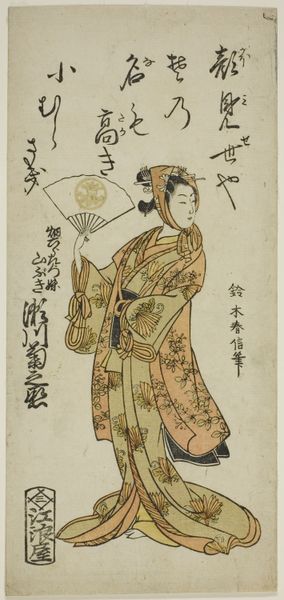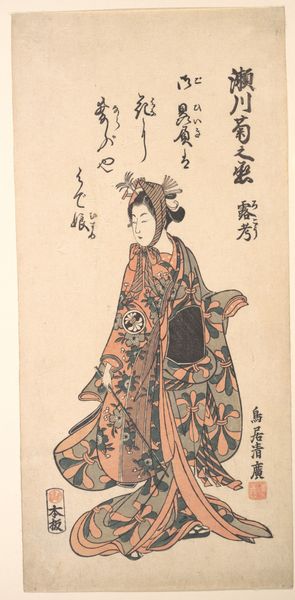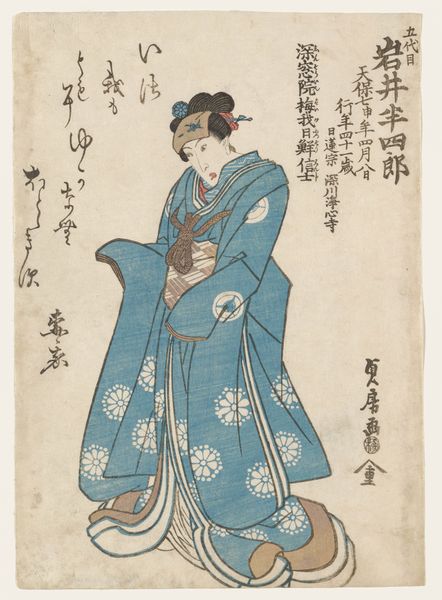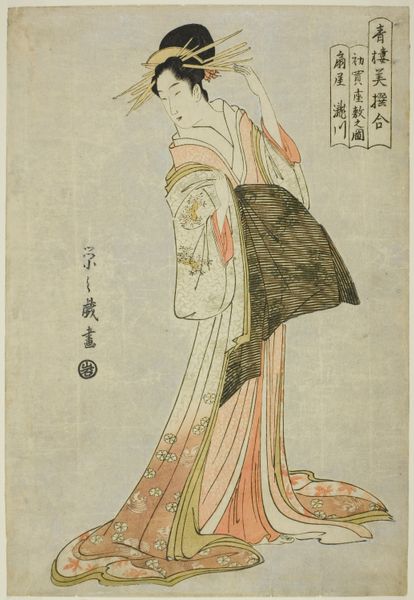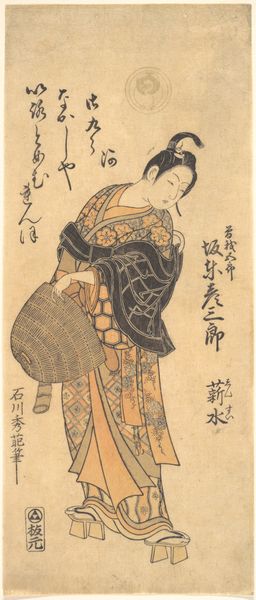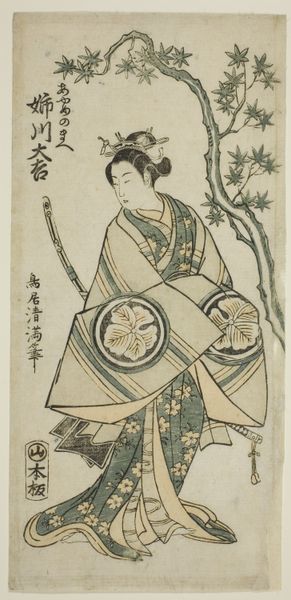
The actor Sawamura Tozo as Kajiwara Heiji Kagetaka c. 1801 - 1818
0:00
0:00
print, paper, woodblock-print
#
portrait
# print
#
asian-art
#
ukiyo-e
#
figuration
#
paper
#
woodblock-print
Dimensions: 14 5/8 × 9 3/4 in.
Copyright: Public Domain
Editor: So, this striking woodblock print is by Utagawa Kunimitsu I, created sometime between 1801 and 1818. It’s titled "The actor Sawamura Tozo as Kajiwara Heiji Kagetaka." The bold patterns and intense gaze really grab your attention, almost theatrical. What do you see in this piece beyond the immediate impact? Curator: The dominant element is undeniably the intricate interplay of patterns. Notice how the curvilinear designs of the robe create a visual tension against the more rigid lines of the actor's posture and the verticality of the sword. This push and pull contribute to the overall dynamism. Consider also the flattening effect of the woodblock technique, collapsing depth and drawing attention to the surface itself. Do you observe any similar tensions elsewhere in the composition? Editor: Well, his expression certainly clashes with the floral, almost decorative robe. He seems very serious, even angry. Is that deliberate, a commentary on something? Curator: The juxtaposition you've astutely identified highlights the inherent artificiality of the kabuki performance. The actor’s expression, frozen in a moment of intense emotion, is carefully constructed, much like the intricate patterns of his costume. It is important not to read that expression solely in terms of Western notions of psychological realism, but rather as part of a visual system of signs and symbols. How does the print’s limited color palette play into that? Editor: The limited color palette does seem to keep the focus on the line work and the patterns. It's like the colors are secondary to the design itself. Curator: Precisely. The restrained use of color reinforces the emphasis on form and line, directing our attention to the artwork’s internal structure rather than external referents. Editor: I hadn't thought about it that way, focusing on how all the elements play off each other. I was too busy trying to figure out what it all meant! Curator: Sometimes, what it *is* precedes any question of *what it means*. That kind of looking opens the door to even deeper interpretations later on.
Comments
No comments
Be the first to comment and join the conversation on the ultimate creative platform.
